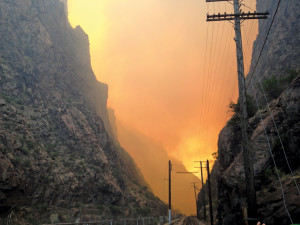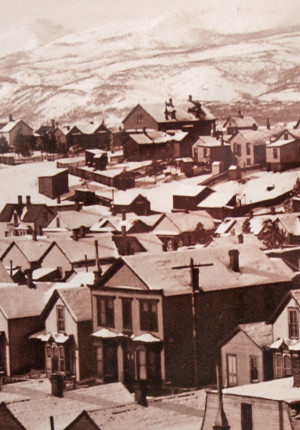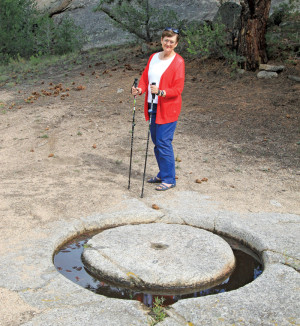By Peter Anderson
How do you know when a place has become a part of you and you a part of that place?
Thirty-five years ago, I lived in a small cabin under a very big sky. Like Crestone, it was at the end of the road. Well, not exactly at the end. You could drive a jeep over the Divide in the summer months, and many people came up there to do just that. But come winter, this all-but-abandoned mining town was the last stop for the county snowplow. For a few years, I was the only full-time resident there during the winter months.
I won’t deny the romance of it all. Ghost towns harbor a kind of pathos that appeals to wanderers, adventurers and history buffs. The lingering presence of another era appeals in ways that a viable town full of trains, smelters, stamp mills and thriving mines would not. Being a modern-day quasi-hermit in a ghost town at 10,013 feet was a very different proposition than digging ore out of the guts of the surrounding mountains. The silence and solitude I appreciated in St. Elmo wasn’t a choice back in the mining heyday of the 1880s as much as it was a professional hazard for the independents working their own claims in the mountains around town. One such prospector, found dead in his cabin after the spring thaw, apparently tried to ride out the winter eating rats and lard.
For me, being a part of that place wasn’t about making a living. I went down valley for that, finding enough work as a river guide during the summer and as a carpenter during the rest of the year to support my choice of habitat. And as the only resident of St. Elmo, at least during the winter, it wasn’t about community either. So what was it about? I come from several generations of wanderers, none of whom were buried where they were born. Maybe it had something to do with staking out a piece of ground. Belonging somewhere. But even that was a transient proposition. I stayed only until the night sky began to weigh a little heavy on that 10 by 15-foot cabin … until other longings led me elsewhere.
Nevertheless, the place stayed with me. I still dream about it. Have for thirty-five years. In one dream, I come back and the town has become a ski resort, full of fern bars and glamorous people in furs and bright ski tights. In another, I can’t find the cabin in the midst of what can only be described as a modern-day boomtown full of meth-headed roughnecks. And more recently – and this may be the strangest dream of all – I come back to the cabin only to find a cow as big as a semi truck in a neighbor’s yard. Waking up from the latter dream was amusing, even though my neighbor’s cow threatened serious damage to my humble home. The other dreams were more like nightmares in which I could no longer find that quality of place that once grounded me there. Maybe that’s symptomatic of a boom and bust culture, where the qualities of a place often change so rapidly. Maybe it had to do with my own wandering tendencies; it would be another 20 years and six more towns before I finally settled here in Crestone.
I’m not sure why St. Elmo lingers in my dreamtime, more so than any place I have lived since. Nor do I know what else to say about these strange nocturnal visits to that mountain cabin. But I do know that place still lives in me. And maybe, in some way beyond my understanding, a part of me still lives there, too.
Peter Anderson’s book, From Gold to Ghosts: A History of St. Elmo, written and published back in 1983, was recently reprinted for the seventh time and is available in St. Elmo for those who venture up to the head of Chalk Creek Canyon.




